
This article about Kashan is part of my series of posts about Iran. Please also read my regional posts: The Northwestern Region, the Central Region, and the Southern Region.

Go to ~ Northwestern Region
Go to ~ Central Region
Go to ~ Southern Region
Kashan – An Introduction
Nestled in the heart of the central Iranian plateau, historic Kashan offers a tantalising glimpse into the ancient civilisation of Persia, known as Iran since 1935. The city was an important production centre for high-quality pottery and tiles between the 12th and 14th centuries and also a stopover for caravans along the ancient Silk Road between China’s Shanxi Province and Rome.
Kashan, with a population of 250,000, is located in Isfahan Province about 250 kilometres (150 mi) south of the capital, Tehran. On the edge of Iran’s central deserts, it is the gateway to the vast Dasht-e Kavir also known as the Great Salt Desert, and nearby Lake Namak. Renowned for its extreme dryness, the desert has a relative humidity of less than 10%. In just 24 hours, temperatures can reach up to 50°C (122°F) during the day and drop to as low as -20°C (-4°F) at night!
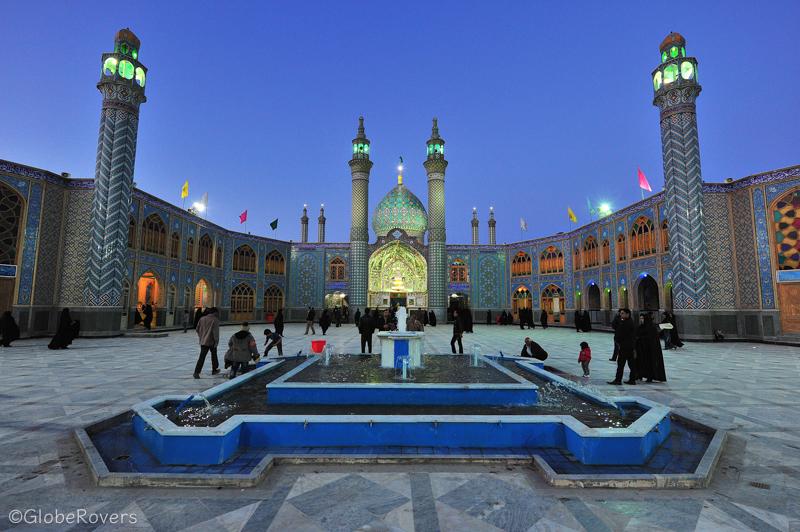
Outside the city are caravanserais dating back to the days of the ancient Silk Road, and the anxcient underground city of Noushabad—meaning city of cold tasty water. Abyaneh village, about 90 kilometres (56 mi) south, is famous for its red-mud buildings, traditional clothing, and a Persian dialect dating from the Sassanid era. Currently under consideration for UNESCO World Heritage listing, the village is a piece of living history and well worth a visit.
While Kashan and its surroundings have much to offer, its architectural wonders are the highlight. Many of the city’s rich and famous built beautifully designed and decorated houses during the 18th and 19th centuries, some of which are now open to the public.

Other significant structures include shrines, traditional bathhouses, ancient city walls, elaborate mosques, historical gardens, fortresses, and an enormous grand bazaar complete with mosques, tombs, caravanserais, arcades, baths and water reservoirs.
This was my second visit to Iran and I was excited about exploring Kashan and its surroundings. I particularly wanted to photograph the city’s historic houses and the distinctive design of its mosques, shrines, hammams (traditional bathhouses) and madraseh (secular learning institutes). Famous for their intricate designs, motifs, and calligraphy, they showcase the city’s vibrant and diverse architecture which dates back for centuries.
After arriving by train from Tehran, I booked into the Khan-e Ehsan Guesthouse—a beautifully restored traditional house. I was told it was the first of Kashan’s historical houses to be turned into a cultural guesthouse, and it unquestionably deserves its designation as a national cultural heritage icon. The house contains a museum of famous Persian art works including poems, dramas, movies, and paintings. Typical of Iran’s traditional houses, the central amphitheatre is a peaceful and cosy area for meals or just to relax on the carpets and soft cushions. Here you will also find a potter’s workshop and a small library.
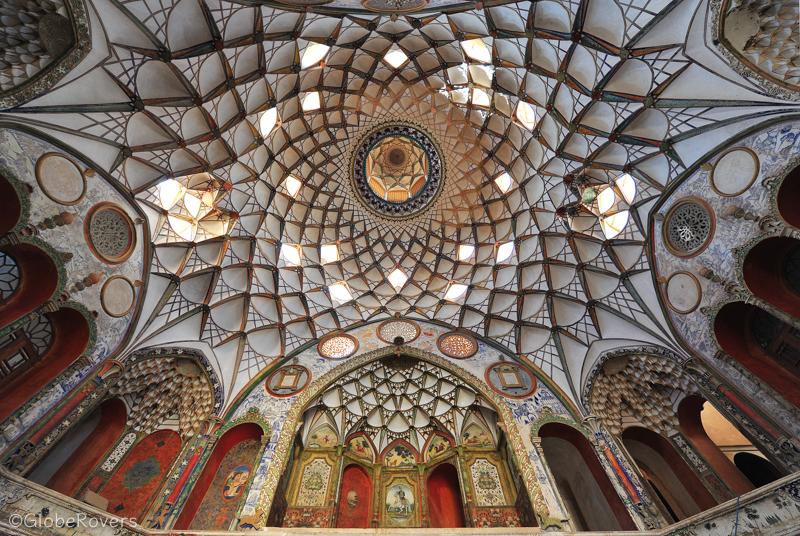
After a well-deserved sleep, I woke at dawn to enjoy breakfast served in the amphitheatre, a selection of local and Western influenced delicacies. These included labneh (soft yoghurt cheese), lighvan cheese (distinctively flavoured sheep’s milk cheese), maast-o khiar (local yoghurt), olives, tomatoes, cucumbers, jam and honey on toast, and a few types of naan (bread), such as the Persian-style lavash.
After my sumptuous breakfast I was ready, hat and camera in hand, to explore the city, and let the traditional architecture and aesthetic wonders take me on a journey through history.
The sun was already beating down on the streets, casting deep shadows off its historic buildings. A tapestry of ancient architecture engulfed me as I walked the short distance to the first traditional house—Khan-e Tabātabāei. I was amazed by the beauty of the buildings, some with towering minarets rising several metres above the bustling streets.
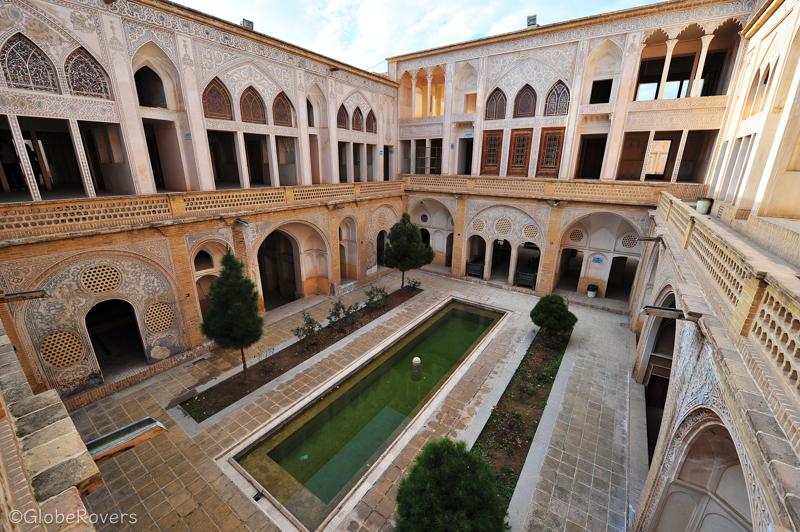
Tabatabaei Historical House
Kashan’s most famous traditional house was easily recognisable by the sign above its large, ornately carved wooden front door announcing “Tabātabāei Historical House” in Persian and English.
Built in the 1880s for the affluent Tabātabāei family, it is arguably the most impressive historical house still standing in Kashan. My guide told me that the daughter of the family married into the Haji Mehdi Boroujerdi family, whose nearby home was my next destination.


Tabātabāei’s mansion is a masterpiece of Persian architecture, its imposing facade adorned with intricate tilework and calligraphy. The entire house is a symphony of colour, its vibrant blues and greens blending seamlessly with delicate shades of pink and yellow.
Covering nearly 5,000 square metres (53,820 sq ft), it includes 40 rooms, four courtyards, four basements, three bâdgirs, or windcatchers, and extensive gardens.
As I stepped inside, I was transported back in time to a world of opulence and grandeur—a maze of rooms and courtyards, each more beautiful than the last. The walls are adorned with meticulously decorated plasterwork and the ceilings are painted with scenes from Persian mythology.


In one room, I was fascinated by the stained-glass windows, which cast a rainbow of colours on the walls and floors in the late afternoon sun. A fountain played in the centre of a tranquil courtyard, surrounded by lush greenery and radiant flowers.
As I explored the house, I was amazed by the attention to detail in every corner. Even the door handles and window latches were carved and adorned with delicate patterns.
I found it hard to stop admiring the beauty around me but eventually dragged myself away and down the road to the Boroujerdi family house.


Boroujerdi Historical House
The Boroujerdi family made their wealth as merchants during the mid 1800’s and built the house in 1857 for the new Tabātabāei bride. The two houses are about three minutes walk apart and look quite similar for an obvious reason—they shared the same architect, Ustad Ali Maryam. I was told that the house took 18 years to build and once I saw the detail, I wasn’t surprised!
Consisting of a rectangular courtyard, impressive wall decorations and three 40-metre-high (131 ft) bâdgirs to cool the house, its impressive facade is adorned with complex tilework and expansive calligraphy. This house is a testament to the splendour of 19th century Persian architecture.
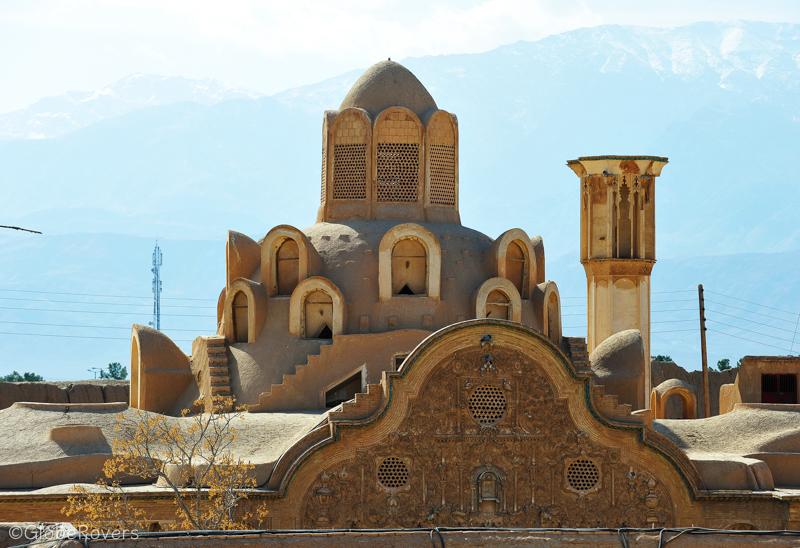
Like the Tabātabāei house, the central courtyard is surrounded by stately arches and lush greenery. I could imagine parties being hosted here in its heyday, turning the garden into a playground for the city’s affluent. The courtyard must have been a hive of activity as the well-heeled elite mingled while enjoying wines from the south, long before the Islamic Republic Government took control in 1979 and placed a total ban on alcohol. Nowadays, illegal alcohol can be found in many Iranian homes!
As I continued through the house, I was amazed by the attention to detail. Marvellous plasterwork graces the walls, while meticulously painted scenes from Persian mythology adorn the ceilings, but the deep-orange-painted arched windows contrasted against the beige patterned ceilings were the highlight for me. I could have studied them for hours trying to decipher the meaning of the patterns.


This house is similar to, yet different from the nearby Tabātabāei house and I found it interesting to compare them.
Throughout the house I could feel the history permeating every room—it has witnessed decades of Persian culture and tradition, and has helped shape the city’s history.
Now it was time to visit my third mansion, the Khan-e Abbasian, a four minute walk away.
Khan-e Abbasian Historical House
Khan-e Abbasian, commonly known as Abbasi House, is another Qajar-era house dating back to 1830-1833, known for its traditional architecture featuring ornate stucco, bas-reliefs, mirrors and stained glasswork.
The house is almost perfectly symmetrical and boasts six courtyards, as well as multiple arcade chambers spread across five floors, covering 7,000 square metres (75,347 ft²). Home to several families and their visitors, the guest quarters are substantially more flamboyant than the family’s living quarters.

Like many other traditional houses in the city, Abbasi House is divided into a public area, or birooni, and a private living area, or andarooni. Guests and visitors were received and entertained in the birooni, while the andarooni was reserved for family members and their close associates.
The private living area is further divided into winter and summer sections. The winter rooms are smaller and designed to retain warmth, while the summer rooms are air-conditioned with bâdgirs and fountains that provide an escape from the scorching heat.
The house was built by a tile merchant for a wealthy glass merchant which is evident from the beautiful stained-glass windows adorning some rooms.

The interior of the house is also impressive. A central courtyard with a small garden and fountain is surrounded by two-storey arcades, supported by elegant, exquisitely decorated wooden pillars. The rooms and ceilings are decorated with artistic and culturally significant traditional Persian motifs.
Stop for a break and enjoy some traditional delicacies at the restaurant in a small courtyard.
Khan-e Ameriha Historical House
The beautiful Khan-e Ameriha is a family residence originally built during the 18th century for Agha Āmeri, governor of Kashan. Like many other historic buildings in the city, it was severely damaged by earthquakes and rebuilt in the 19th century.
Also known as Āmeri House, it has dozens of rooms, two bathhouses, and seven attractive courtyards featuring lovely gardens and fountains, covering a total area of 9,000 square metres (96,900 ft²). Its architecture and ornamentation reflect the glory and elegance of Persia’s past.
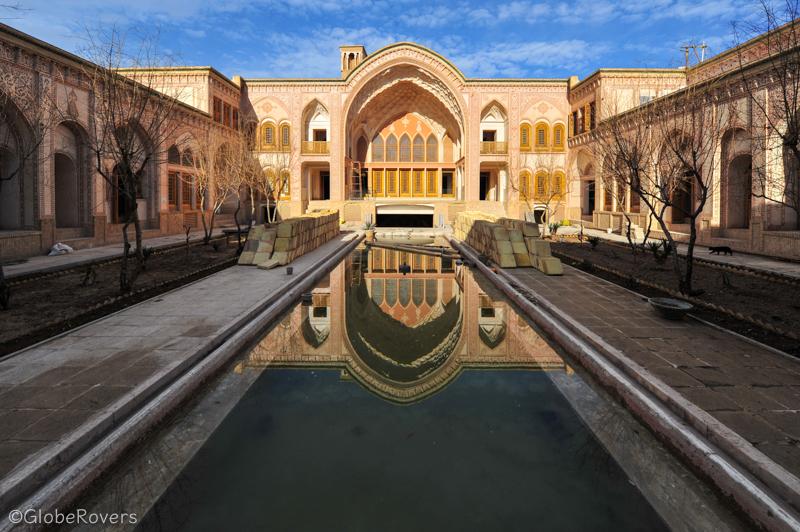
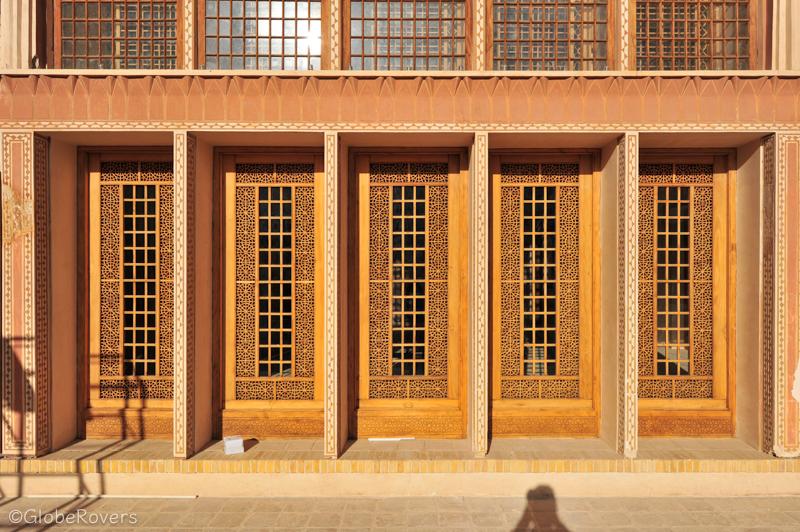
As I walked through the courtyards, I couldn’t help but admire the exceptional architecture and decor. This mansion boasts intricate designs and details rivalling the nearby houses—a testament to the artistic brilliance of the craftsmen of that era.
After extensive renovation in 2014 it was converted into a boutique hotel—one of the most expensive. It offers 21 artistically-decorated rooms and four magnificent courtyards, with a range of amenities and services for guests.
Kashan has over 100 historic houses from different eras—other notable examples include the Akhavan and the Sharifian houses.
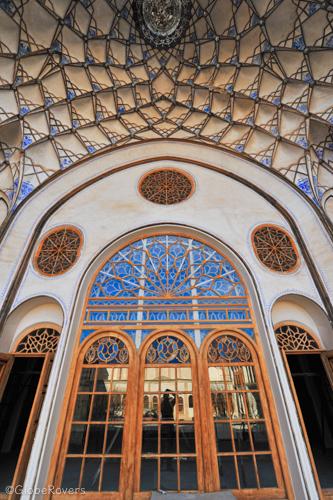
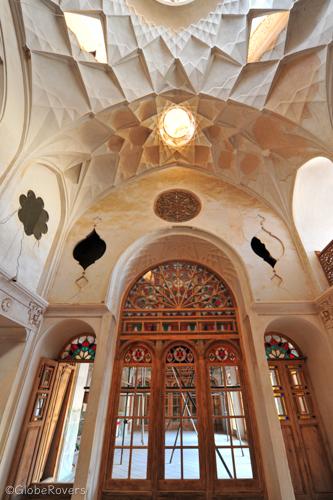
Mosques / Mausoleums / Madraseh
Kashan’s historic mosques, madraseh, shrines and mausoleums also have a unique charm. The Jameh Mosque is one such example—its grand facade is adorned with extensive tilework and calligraphy, while inside it is a symphony of geometric patterns and delicate plasterwork. The mihrab, or prayer niche, is a masterpiece of Persian design.
The 18th century Agha Bozorg Mosque and Madraseh also exemplify the exquisite artistry of Islamic design, with towering minarets and a grand dome that dominates the city skyline. The complex was specifically constructed for Molla Mahdi Naraghi II—also known as Āghā Bozorgh—to conduct sessions of prayer, preaching, and theological teaching. He was the son of the legendary Mulla Ahmad Naraqi, the second strongest person in Iran after the king himself.

Inside, the mosque is a kaleidoscope of geometric patterns and tilework. Its walls are adorned with calligraphy and the ceiling is painted with scenes from Islamic history.
It was not just the beauty of the building that impressed me, I was also overwhelmed by its serenity and tranquillity—the mosque is a place of worship, and the reverence of its visitors is palpable.
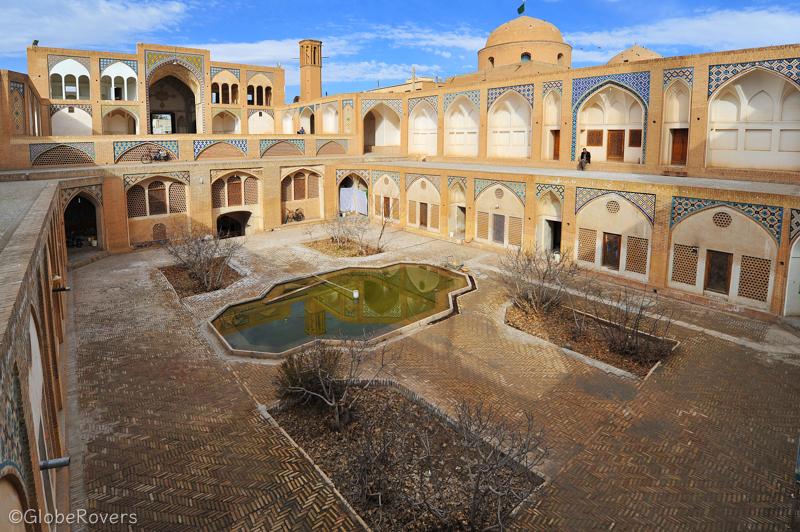
Mohammad Hilal Ibn Ali Shrine and Mausoleum
In Aran-Bidgol just outside Kashan is the massive Mohammad Hilal Ibn Ali shrine, one of Iran’s most majestic religious complexes. Unquestionably a very sacred place, it is visited each day by hundreds of devoted Muslims. The shrine reflects the country’s rich history and culture, and its peaceful, serene atmosphere provides a welcome respite from the hustle and bustle of city life.

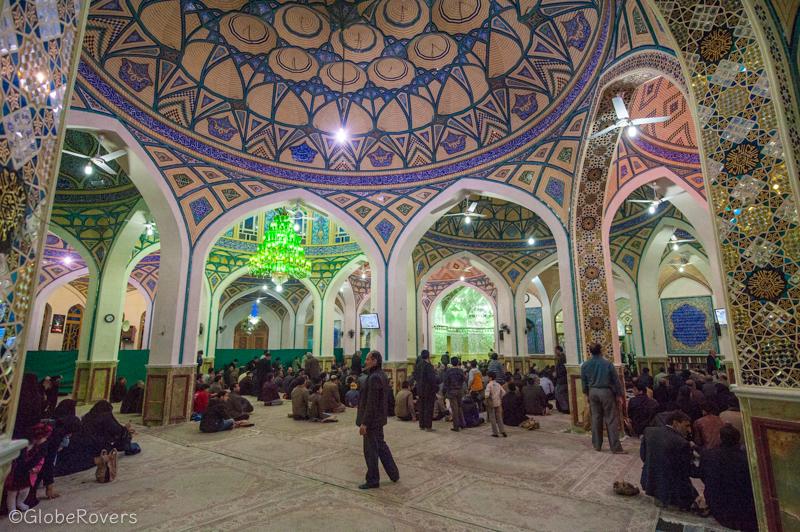
The mausoleum is surrounded by stunning Islamic architectural elements, including blue-tiled minarets, arched arcades, domes, halls, and chambers. Both the interior and exterior boast complex tilework, plasterwork, and woodwork. The building’s separate entrances for men and women are adorned with impressive mirror tiling, and the interior is elaborately decorated with mirror-tiled ceilings, stained-glass windows and chandeliers. Right outside are graves of martyrs from the 1980s Iran-Iraq war.
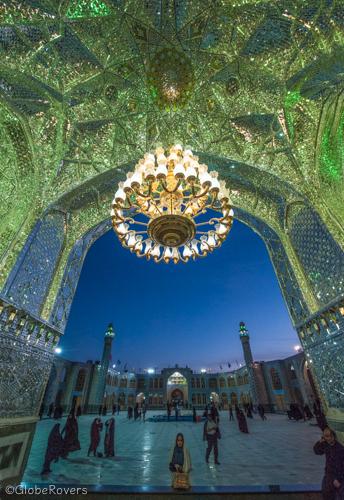
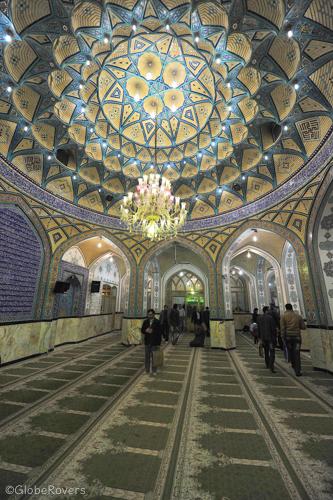
Hammams
Kashan’s hammams are an integral part of Persian architecture and also demonstrate the importance of communal bathing in Persian culture. The bathhouses were not just places to wash, but also social hubs where people from all walks of life come together to relax. Today most of them have been converted into museums, restaurants and shops.
One of the most beautifully designed is Hamam-e Sultan Amir Ahmad, a traditional Persian public bathhouse constructed in the 16th century during the Safavid dynasty. Covering about 1,000 square metres (10,764 ft²), it consists of a sarbineh (dressing hall), a garmkhaneh (hot bathing hall) and a grand dome which lets in shafts of light that play on the walls. A labyrinth of rooms and small corridors, it is divided into separate sections for men and women, each with their own changing rooms and bathing pools surrounded by palatial arches and intricate plasterwork. Water cascades down from a central fountain fed by a complex system of pipes and tunnels to ensure a constant supply of hot water.

The hammam features turquoise and gold tilework, plasterwork, brickwork, and artistic paintings, while the elegant arches and convex glass panes of its multiple domes light the interior while keeping it hidden from the outside world. Climb up the small stairs to the domed roof for panoramic views over the city.
The mausoleum of Sultan Amir Ahmad is close to his hammam and also worth a visit.
The UNESCO World Heritage-listed Bagh-e Tarikhi-ye Fin enclosed gardens were once a symbol of wealth and power in ancient Persia. Dating back to the Safavid era, it features a central pool, fountains, lush greenery, and several pavilions—each with unique decorations.
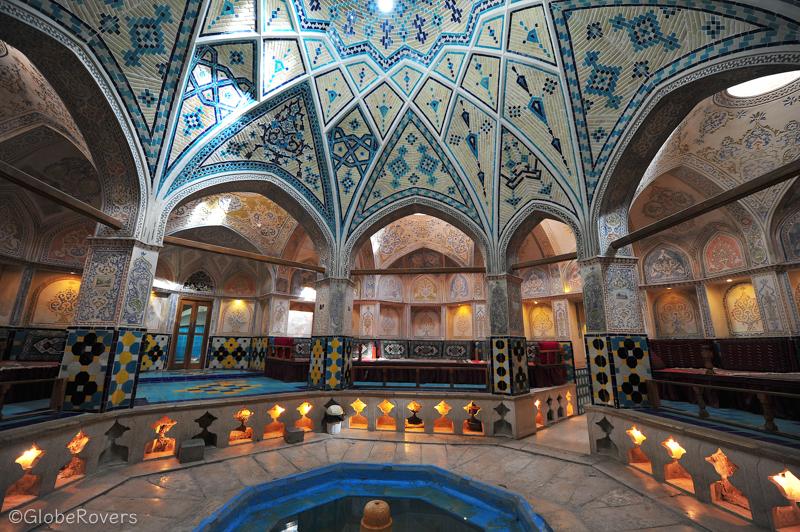
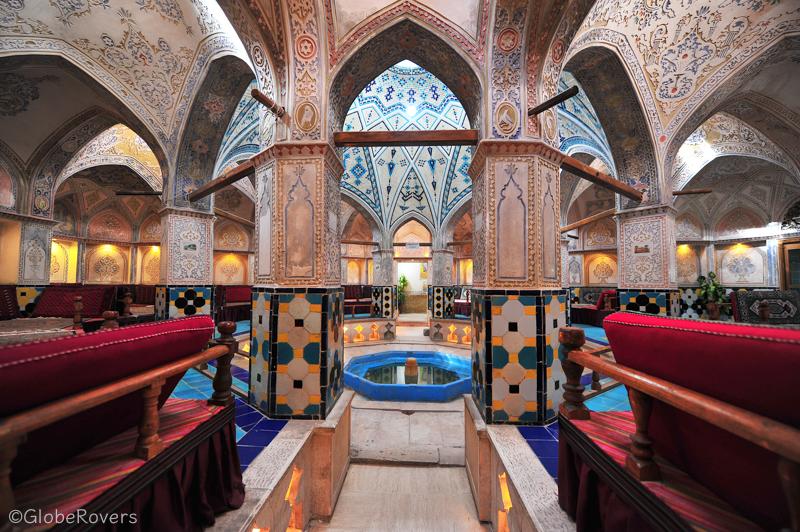
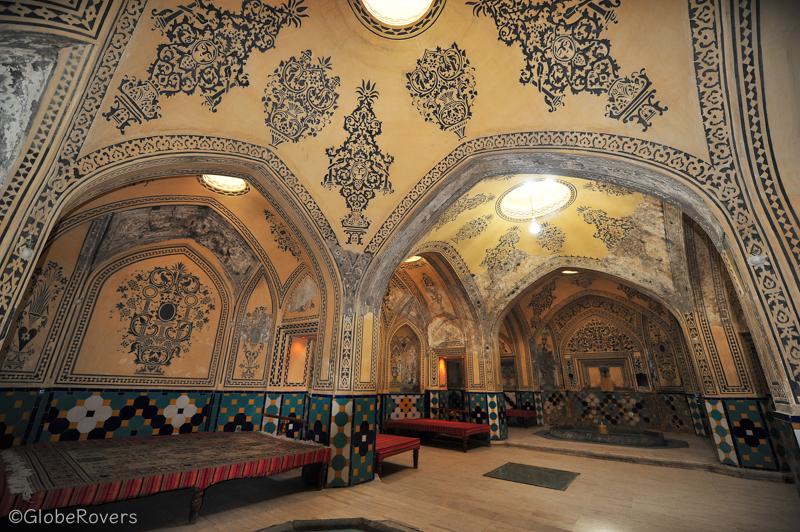
Bazaars
No visit to this city is complete without a trip to the Grand Bazaar of Kashan, famous for its carpet and copper shops, and also its caravanserai and hammam, all with remarkable architectural designs. Shop for traditional handicrafts, spices and textiles in its maze of alleyways and stalls.
The beautifully crafted Caravanserai of Khan Amin al-Dowleh Timche was a historically significant trading centre on the ancient Silk Road, known for its chambers where Kashani rugs were traded, along with rugs from around the region. Enjoy the stunning interior while shopping for carpets and antiques, or visiting the teahouses.
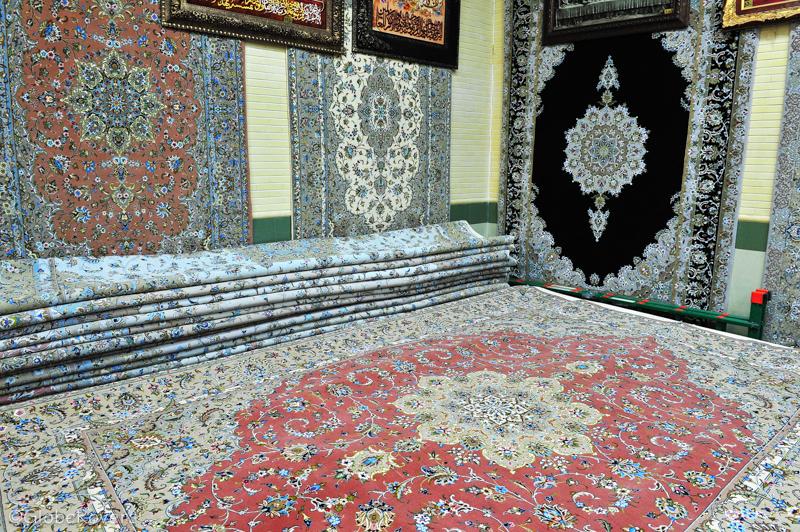
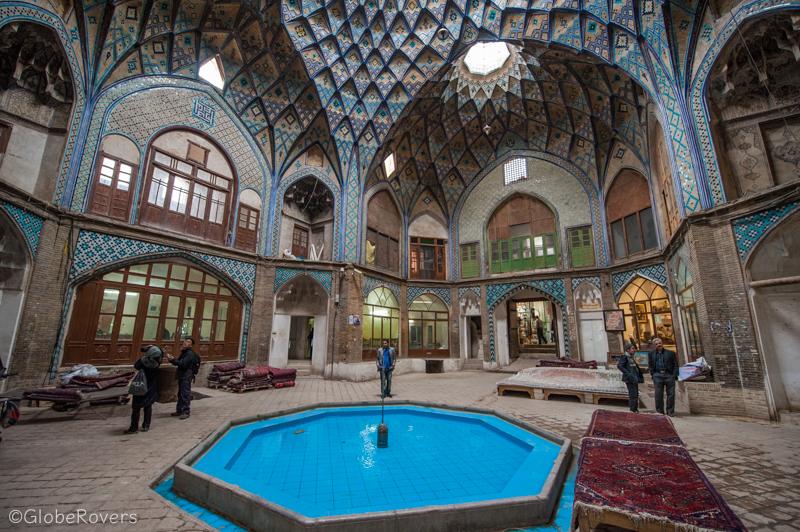
Before leaving Kashan, sample some of its traditional dishes such as the famous Kashan lamb stew, a hearty dish made from tender lamb meat, chickpeas, and tomatoes and flavoured with aromatic herbs and spices. For those with a sweet tooth, try qottab, a traditional Persian pastry filled with sweetened walnuts and flavoured with cardamom and rosewater.
Perhaps just as memorable to me as the architectural wonders of Kashan, however, was the hospitality of its people. Iranians are known for their warm and welcoming nature, and I found the people of Kashan to be no exception—expect to be greeted with open arms and offered a cup of tea at every turn.

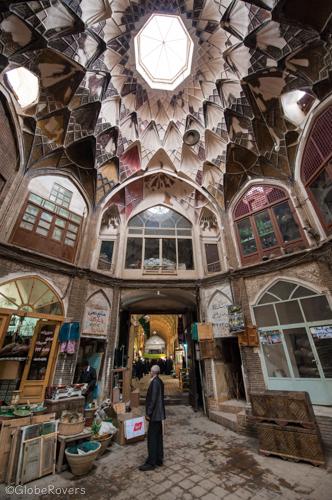
Kashan is a city that offers a unique blend of history, culture, and natural beauty. From its stunning architecture and rich textile heritage to its fragrant rose gardens and bustling bazaars, there is something for everyone in this desert oasis. Whether you’re a history buff, a foodie, or simply looking for a change of scenery, Kashan is a destination that should not be missed.
☛ Read more:
All posts of Iran
The Northwestern Region
The Central Region
The Southern Region
Kashan: A Desert City with a Rich Cultural Heritage ~ you are here!



Blog post and photos by Peter who has been travelling almost full-time since 2005 and has been to over 122 countries. He visited several countries, such as Japan, more than 20 times. Peter is Editor-in-Chief and Publisher of GlobeRovers Magazine, an independent travel magazine focused on intrepid destinations.
